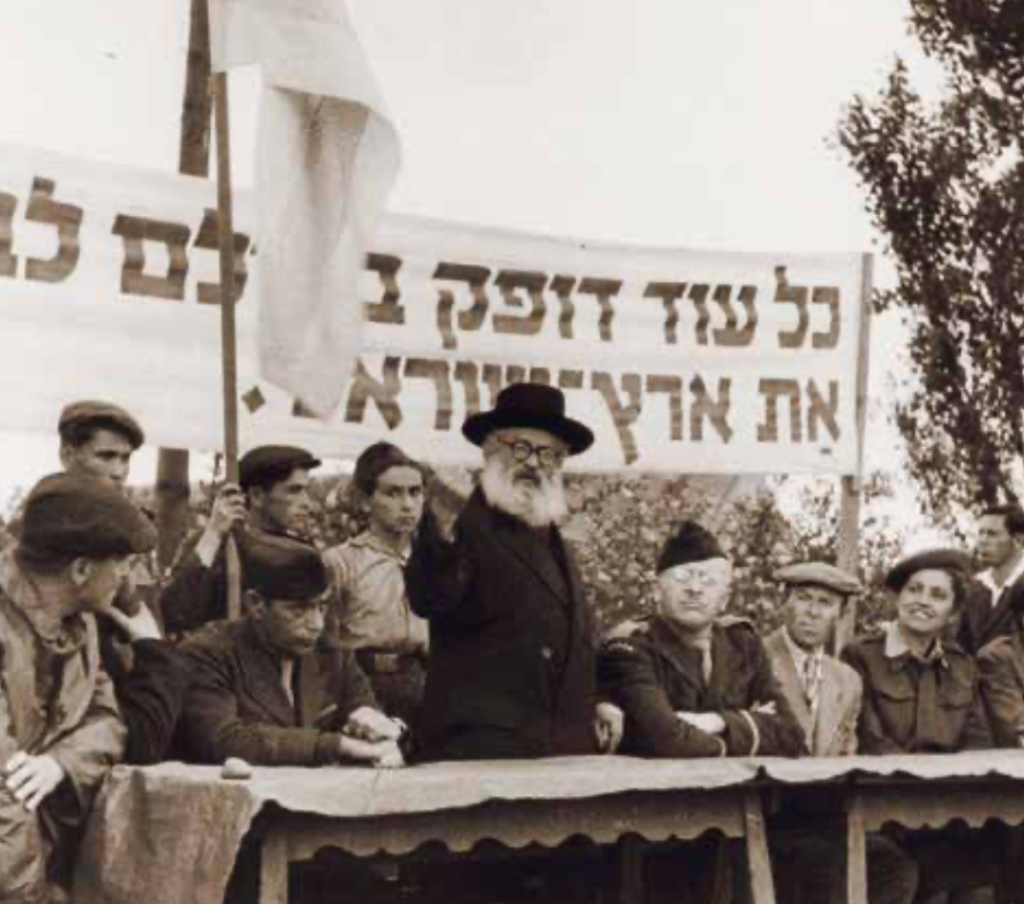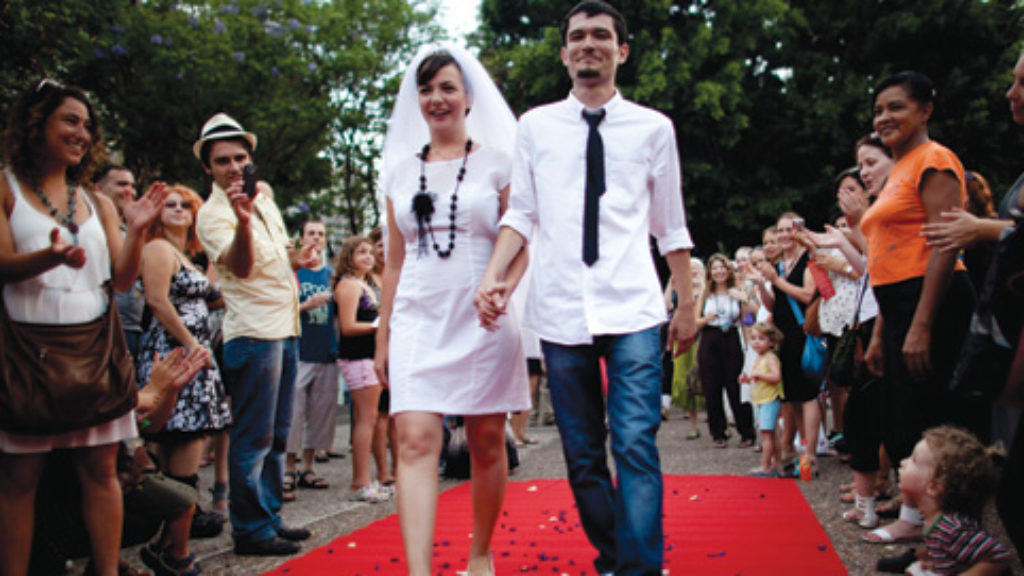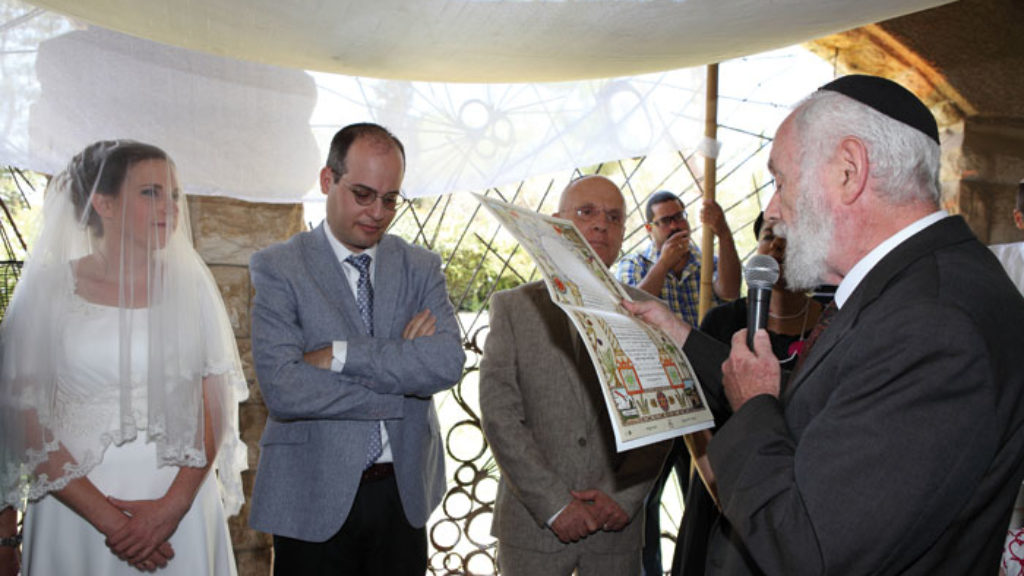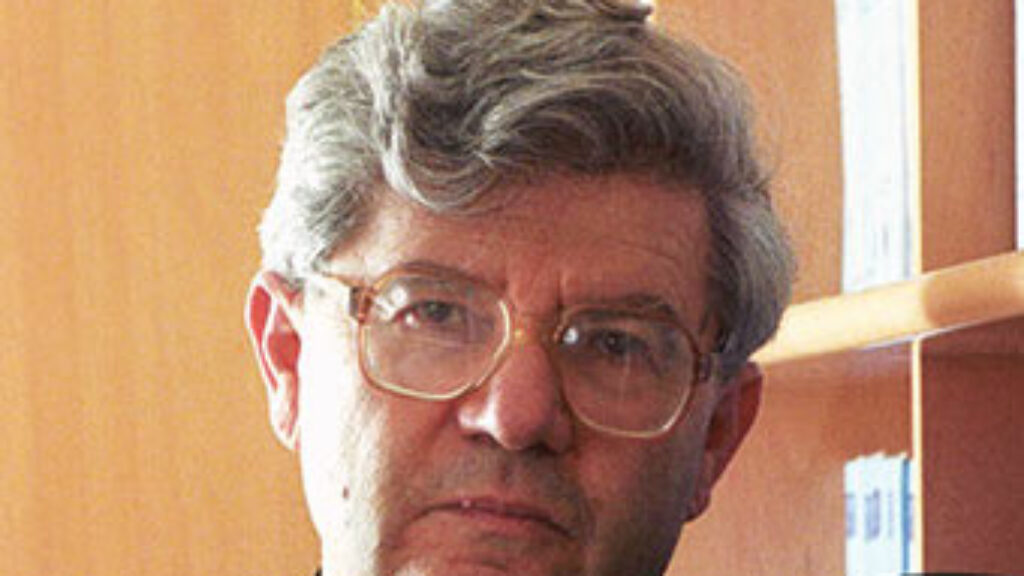Ireland and the Promised Land
Most American Jews are deeply convinced that religion ought to be a private matter, so when battles over the Sabbath or conversion or kashrut erupt in the Jewish state, they are often befuddled. Why isn’t Israel more like America, they wonder. In his ambitious new book, Alexander Kaye instructivelyraises the question of why Israel isn’t even less like the United States.
During the long diaspora, determining the relationship between religion and state was, unsurprisingly, never a central concern of the stateless Jewish people. Nor, as the Israeli scholar Aviezer Ravitzky has frequently observed, did any premodern Jewish thinker ever envision the creation of a Jewish state in the Land of Israel prior to the coming of the messiah. Even in the late 19th century, when many religious Jews joined the Zionist movement, few gave any thought to the kind of polity that ought to be established. There were much more urgent and basic tasks at hand. By the 1940s, however, when statehood was finally within sight, a number of leading religious Zionists began to think more concretely about the role of Judaism in the Jewish state.
They did so, naturally enough, by reaching back to the past for models. Some argued that the time had come to set up a state based on the law of the Torah, a halakhic state in which Jewish law would be the law of the land. Such thinkers saw themselves as restorers of a lost past, but Kaye argues that they were, in fact, inventing something new: the idea of Jewish theocracy. A liberal himself, Kaye clearly deplores this idea—but not primarily on liberal grounds. According to his account, these would-be theocrats, preeminently Yitzchak Herzog, the first Ashkenazi chief rabbi of Israel, were, in fact, rejecting the traditional Jewish conception of politics in favor of a new, foreign model.
Fortunately, there was no chance of the State of Israel becoming anything remotely like a theocracy in 1948. But in the years following Israel’s failure to adopt a constitution that would have thoroughly disempowered them,theocratic ideas became deeply rooted in certain sectors of the Israeli population and continue to pose a threat to Israeli democracy. Kaye appears to believe that demonstrating the alien origins of these ideas will discredit them, but he has obscured the fact that they also have deep roots in traditional Jewish thought—and pulling up those roots isn’t as easy as he would like it to be.
It was a Jew, it seems, the historian Josephus, who coined the term “theocracy,” and he did so in order to characterize the regime outlined in the Torah. While Josephus’s first-century Greek-language writings played no part in shaping the Jewish political tradition, the notion of theocracy emerged there afresh, in essence if not in name, in the medieval period and is most closely associated with Maimonides. This was what Ravitzky called the “unifying model,” which imagineda regime presided over by an ideal ruler upholding and enforcing the Torah’s divine law. Maimonides, as Ravitzky puts it, “traces the figure of a prophetic philosopher who is also sovereign king: spiritual-religious and socio-political power in one locus, with the two spheres merging into a single personality and a single legislative enterprise.”
Kaye gives this model very short shrift indeed. He hastens to point out that another Israeli scholar of Jewish thought, Menachem Lorberbaum, has “argued that even Maimonides did not imagine halakha as an exclusive legal system.” He writes, “Lorberbaum’s interpretation of Maimonides shows that even those committed to a Maimonidean position need not pursue the ideal of the halakhic state. Maimonides himself recognized an entire realm of legal and political authority that is independent of halakha.” That may well be so; Maimonides is, famously, among the most subtle and difficult thinkers in Jewish history. Nonetheless, he concluded his great legal code the Mishneh Torah with the “Book of Kings and Their Wars,” a detailed halakhic blueprint for what appears to be a theocratic monarchy—and it was this model that became, as Ravitzky puts it, “dominant . . . in Jewish literature throughout the generations.”
Kaye pays much more attention to the much less famous 14th-century Spanish talmudist Nissim of Gerona. The Ran (the acronym by which he was known to tradition) was less a legal pluralist than a dualist. Presciently, he argued that the halakha “was not intended for the practical running of a state” and, consequently, that “it certainly had no claim to being the exclusive legal system for the Jewish state.” Even in biblical times, the Ran argued, it was necessary to establish alongside the metaphysically perfect but practically insufficient halakha a parallel legal regime, the extrahalakhic law of the Jewish king. The Ran’s position was not universally accepted, Kaye notes, but “its basic outline was widely held. Premodern Jewish religious leaders typically believed that a nonhalakhic political law had to govern the Jewish community alongside halakha” and “that the Jewish king performed that function in biblical society, and that the king’s authority was inherited by Jewish lay leaders after the decline of the monarchy.”
Of course, regardless of what they thought about theocracy as an ideal, in actual practice Jews were always legal pluralists. They lived for centuries under overlapping legal systems while maintaining communal institutions that “operated alongside, and sometimes in conflict with, halakha.” Thus, it is not surprising that when many religious Zionists began to think about a constitution for the new state, they thought about it in pluralist terms. Kaye’s survey of such thinkers focuses mainly on Reuven Margulies, Shimon Federbusch, and Shlomo Gorontchik (later Goren, who, as chief rabbi of the IDF, blew the shofar at the Western Wall in June 1967). “All of them,” he maintains, argued “for a constitutional regime that gave ample room to halakhic authority without foisting its discriminatory norms on an unwilling public.” This, he notes, “made it possible to give halakha a role in the state while also insulating it from the challenges of modernity.”
There were, however, religious Zionist thinkers who saw things differently, but for a substantive treatment of their ideas, one has to turn from Kaye’s book to Asaf Yedidya’s recent Halakha and the Challenge of Israeli Sovereignty. Yedidya discusses all of the thinkers Kaye treats and many others, including Ze’ev Jawitz, Pinkhos Churgin, Chaim Tchernowitz, and Meir Berlin (Bar-Ilan), each of whom argued for a version of the theocratic “unifying model.” Yedidya concludes that most religious Zionist rabbis, in the pre-State years, advocated a form of “legal centralism, which maintained that all legal authority in the state must derive from a single source of authority—the current halakha and its ordained commentators.”
The only one of these figures to whom Kaye devotes any attention is Meir Bar-Ilan, the Lithuanian-born rabbi who was for a time the leader of the religious Zionist movement in America (Bar-Ilan University is named after him). He doesn’t do so, however, until he discusses post-1948 developments, when he retrospectively notes that “as early as 1922,” Bar-Ilan had “made the claim that the Jewish tradition knows of no separation between church and state.” This delay in noting (without elaborating on) Bar-Ilan’s theocratic leanings seems to reflect Kaye’s reluctance to break the rhythm of his overall narrative, which revolves around the role played in the late 1940s by Chief Rabbi Herzog.
Herzog was a forthright proponent of Jewish “theocracy,” a word he used, albeit somewhat warily, “as a blanket term for a state ruled by God’s law.” In August 1947, after the Jewish National Council that would form the basis of the government of Israel appointed a committee to put together a constitution, he decided to write one himself, one under which “the entire state would be governed by a single law: halakha.” Herzog knew just how far out of step with contemporary Zionist liberals and socialists he was. He was aware that “he had no option but to propose modifications to halakha in order to make it fit with modern democracy,” and did everything he could to overcome such obstacles as Maimonides’s prohibition of the appointment of non-Jews to political authority. Still, as Kaye points out, Herzog remained committed to the idea “that the state courts should even prosecute people for some religious transgressions, such as the public desecration of the Sabbath and sexual immorality.”
All of this prompts Kaye to ask two crucial questions:
Why did Herzog take such strong exception to legal pluralism? Why did he reject a model for the Jewish state that drew firmly on halakhic precedent, provided reasonable solutions to the challenges of accommodating both halakha and democracy, and received support from within the religious Zionist community?
Having set aside the old theocratic “unifying model” and brushed under the rug all of the earlier religious Zionist thinkers who adhered to it, Kaye seems to have no choice but to look beyond the realm of tradition for an explanation. He finds one in Ireland.
Before emigrating to Palestine in 1936, the Polish-born Herzog had been for 15 years chief rabbi of Ireland, where he was especially close to Éamon de Valera, the nationalist leader who would become the first prime minister of the Irish Free State. The two men were not only good friends, they also supported each other’s nationalist cause. At one point in the early 1920s, as civil war raged in Ireland between unionists and nationalists, de Valera even took refuge in Herzog’s home.
Kaye maintains that Herzog’s time in Ireland must have impressed upon him the importance of legal sovereignty for nationalist movements. Moreover, just as Herzog was leaving the country, Ireland provided, according to Kaye, “a model of how to incorporate religious law into a modern democratic constitution.” The new constitution “promoted religious teachings in many areas of social and political life, including constitutional law” and “enshrined religious doctrine” within itself.

Herzog was far less impressed with the all-too-secular draft of an Israeli constitution produced by a jurist named Leo Kohn, a professor of international relations at the Hebrew University, who drew inspiration from several foreign constitutions.Herzog contrasted Kohn’s work with the Irish constitution, which he saw as a good, democratic precedent for an Israeli constitution that would guarantee “that the Jewish religion has a special status as the religion of the majority of the citizens.” Kaye thus has reason to conclude that “Herzog’s experience in Ireland goes a long way to explaining his consistent commitment to the principle of legal centralism and its indispensability to Zionist national goals.” But he goes somewhat too far when he asserts that this experience “also suggests why he did not consider a ‘theocratic-democratic’ constitution to be paradoxical. If Ireland,” Kaye asks, “could give the Catholic religion such pride of place in its new constitution, why should Israel not do the same?” Despite its recognition of the Catholic Church, Ireland was not, by Herzog’s own definition, a theocracy.
Ireland wasn’t Herzog’s only constitutional model, Kaye admits, noting that Herzog wrote “in the midst of a global trend of postcolonial nationalists creating legally centralist states.” Of course, this was also true of secular Zionist legal thinkers, who “had been educated under the auspices of the British in Palestine or in European universities that espoused the same ideology of the supremacy of the law of the centralized state.” True, these jurists envisioned a very different kind of state than Herzog did, but, according to Kaye, this “masks a deeper identity,” namely the ideal of “a state in which only one legal regime could rule within its borders.”
This is an astute comparison, but I wonder about that word “deeper.” It seems to me that disagreement about the authority of God’s law is more fundamental than agreement about centralization. And even if Kaye has helped explain the departure of Herzog and his allies from some of their religious Zionist predecessors in this respect, he hasn’t explained the deeper difference with them. Why did he, unlike the earlier religious Zionist thinkers Kaye discusses, adhere so strongly to the old “unifying model,” in which halakha was the law of the land?
As Herzog himself well understood, there was no chance of this model being adopted in his day; the overwhelming majority of Israel’s earliest citizens had no appetite for theocracy. Within the religious Zionist camp, however, Herzog’s outlook quickly displaced what Kaye portrays as the previously dominant pluralists. According to Kaye, the transformation was so thorough that by the early 1950s, “the hope of the realization of a Torah state” had become “the cornerstone of religious Zionist thinking.” How did this happen? Kaye doesn’t say.
What he does say is that this shift was not ephemeral. Even after their hopes were dashed, “religious Zionist leaders . . . did not stop believing that the State of Israel should have a single unified halakhic law.” But they did stop saying it. In public, they accepted limitations on the authority of the halakha (while continuing to struggle over specific issues), strategically reverting to pragmatic pluralism. But “among themselves, religious Zionists . . . remained committed . . . to the ideal that the entire state and its law should be governed by halakha.”
Kaye doesn’t object to such strategic hypocrisy. What bothers him is that in recent years it has been waning. Increasingly, religious Zionists have been challenging the authority of Israel’s civil courts and even calling for the replacement of civil law with halakha. As an example, Kaye quotes Bezalel Smotrich, the leader of the small far-right Tkuma Party, who, in 2019, “publicly sought responsibility for the state’s judiciary in order to implement halakhic law in Israel.” He did not succeed. The final and most extreme example that Kaye brings of this theocratic trend is Rabbi Yitzchak Ginsburgh, whose “The Way of Life Movement” calls for the overthrow of the Israeli government and its replacement by a halakhic state. These dangerous developments, Kaye concludes, “all flow directly from the legal philosophy that religious Zionists began to promote in the late 1940s.” But is this really true?
Take Kaye’s last and most egregiousexample, Rabbi Ginsburgh, who has celebrated Jewish terrorism and publicly called for the overthrow of every left-wing and right-wing Israeli government “until the rule of Torah is established in the Land.”His “battle cry,” Kaye writes, “is like a distorted version of religious Zionist ideology. . . it is easy to recognize the echo of Herzog and other religious Zionists of his generation.” But Ginsburgh is an American-born rabbi, affiliated with Chabad, whose intellectual influences, such as they are, are elsewhere. He isn’t echoing Herzog; they are both echoing something much older: the venerable, unifying, theocratic model that Kaye works so hard to marginalize in his history.
Kaye writes, in the end, that his “genealogy of the halakhic state supports the work of those who question halakhic supremacy . . . from within the Jewish tradition.” That is certainly a worthy project. But even politically engaged intellectual history must do more than tell a story that includes only the intellectual ancestors with whom you agree while attributing the ideas you don’t like to those outside the family.
Suggested Reading

Why I Defy the Israeli Chief Rabbinate
Everyone knows that the Israeli Chief Rabbinate is often capricious, needlessly adversarial, and hopelessly bureaucratic. Actually, it’s worse than that. It can’t be abolished any time soon, but its power should be radically diminished.

Halakha and State: An Exchange
In our Winter 2016 issue, Elli Fischer explained why he defies the Israeli Chief Rabbinate and argued for radical reform. Four responses and his rejoinder.
The Rock from Which They Were Cleft
In the past few years, MK Rabbi Haim Amsalem has become more of a controversial figure in his own community, not to mention the Shas party he represents, than outside of it. In two monumental works of Jewish law, he seeks to impact the future not only of that community, but of Israel's Russian immigrants.

You Shall Appoint for Yourself Judges
Was the once-head of Israel's Supreme Court a robust defender of human rights or a runaway judge who imposed his political preferences on a nation? Tom Ginsburg explores the legacy of Aharon Barak.
Comments
You must log in to comment Log In